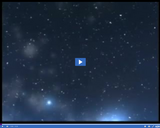
Satellites and space shuttles orbiting the Earth travel in the Exosphere.
- Subject:
- Science
- Provider:
- Utah Education Network
- Author:
- Visual Learning Company
- Date Added:
- 02/28/2010

Satellites and space shuttles orbiting the Earth travel in the Exosphere.

Students build their own satellite using household materials. Through the process, they learn about satellites and their functions.

This video segment adapted from NASA's Goddard Space Flight Center shows how integral satellites are to everyday life and describes the different types, including orbital and geostationary.

Move the sun, earth, moon and space station to see how it affects their gravitational forces and orbital paths. Visualize the sizes and distances between different heavenly bodies, and turn off gravity to see what would happen without it!

From this original story, young readers and listeners learn about four tools scientists use to study climate - climate stations, weather balloons, satellites, and buoys. The story is available at two reading levels and in three formats - text-only, illustrated booklet, and electronic book. Glossary included. Each issue of Beyond Weather and the Water Cycle contains an original story that expands on the theme.

Build your own system of heavenly bodies and watch the gravitational ballet. With this orbit simulator, you can set initial positions, velocities, and masses of 2, 3, or 4 bodies, and then see them orbit each other.

Build your own system of heavenly bodies and watch the gravitational ballet. With this orbit simulator, you can set initial positions, velocities, and masses of 2, 3, or 4 bodies, and then see them orbit each other.

This animation adapted from NASA shows the orbital paths of spacecraft in NASA's Earth Observing Fleet that are a source of wide-scale, primary research about Earth.

This article profiles Dr. Leigh Stearns, a research scientist with the National Science Foundation's Science and Technology Center for Remote Sensing of Ice Sheets (CReSIS) and Assistant Professor in Geology at the University of Kansas who studies glaciers in Greenland.